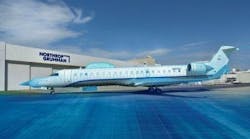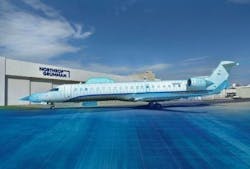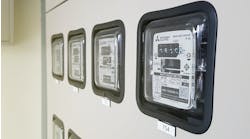Northrop Grumman's digital twin of testbed for digital mission systems
Northrop Grumman is developing a digital replica of its flying CRJ testbed airframe and subsystems to take full advantage of digital engineering capabilities in the development of new product lines of mission systems.
Northrop Grumman’s Digital Shadow testbed, a digital multi-spectral integration platform, furthers the company’s ability to rapidly and robustly test and deliver advanced capabilities, they claim, noting how this testbed will enable faster and more agile development, modification and testing of new capabilities across programs. Digital Shadow will test digital representations of sensors, such as fighter radars, in a realistic virtual environment on the aircraft that simulates current and future capabilities and collects performance data.
“Our Digital Shadow testbed will enable the rapid iteration and assessment of various mission systems configurations and trades via digital models across the entire lifecycle,” said Roshan Roeder, vice president, airborne multifunction sensors, Northrop Grumman. “Extending the digital thread and developing a digital twin of our test aircraft allows us to rapidly collect valuable data of our mission systems all while reducing cost, schedule and risk.”
The company has been developing authoritative digital twins of its current and future capabilities across the enterprise to help reduce cost and accelerate development. These digital models and deep-data stores enable engineers to answer questions with increased speed and agility. The Digital Shadow testbed, a virtual-mission systems-integration lab, provides the ability to correlate digital-sensor representations with their physical design, further validating system and performance models and leveraging Northrop Grumman’s repository of data collection.
By creating a digital version of the aircraft and the onboard mission system suites and rapidly reconfiguring and integrating sensors across the spectrum, the company can virtually fly scenarios and sensor combinations beyond the physical-testbed limitations, thus increasing the breadth and scale of experimentation, and reducing timeline and flight test costs—ultimately extending mission capabilities for the warfighter. The company’s Digital Shadow testbed will enhance the ability to upgrade capabilities through software to stay ahead of evolving threats and reduce development and sustainment costs, they add.




